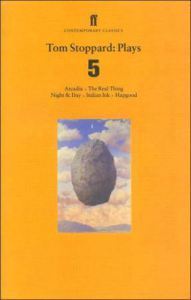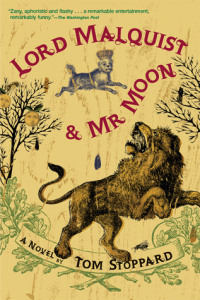Devon Trevarrow Flaherty's Blog, page 75
October 29, 2013
Author Review: Tom Stoppard
 Plays 5 (or Plays FIve), a compilation of five of Tom Stoppard plays, published by faber and faber in 1999. Also, Lord Malquist and Mr. Moon, by Tom Stoppard, from Grove Press, published first in 1966 and with an introduction in 2005.
Plays 5 (or Plays FIve), a compilation of five of Tom Stoppard plays, published by faber and faber in 1999. Also, Lord Malquist and Mr. Moon, by Tom Stoppard, from Grove Press, published first in 1966 and with an introduction in 2005.
Note that I have recently reviewed Rosencrantz & Guildenstern Are Dead, Stoppard’s most famous work, as part of a study of Shakespeare’s “Hamlet” and that is why I took this diverting route into some of the further works of Stoppard. I also reviewed the incredible movie (directed by Stoppard), Rosencrantz & Guildenstern Are Dead.
Stoppard is not your typical playwright, in career. He has exactly the type or career that I would love to have, in that he is never satisfied just sticking to one thing. His production includes not only many plays (and many celebrated plays, beginning with radio plays and expanding to the stage), but also screen plays (some original and some adaptations), movie direction, translation, and even acting, libretto, and a novel. It would take me an entire “semester,” as it were, to cover Stoppard in his entirety, hitting on all his best plays and watching his movies. Here are some of the most famous (far from comprehensive):
Lord Malquist and Mr. Moon (novel, 1966)
“Rosencrantz & Guildenstern Are Dead” (play, 1966)
“The Real Inspector Hound” (play, 1968)
“Jumpers” (play, 1972)
“Travesties” (play, 1974)
“Every Good Boy Deserves Favour” (play, 1977)
“Professional Foul” (TV play, 1977)
“Doggs Hamlet” and “Cahoot’s Macbeth” (companion plays, 1979)
“The Real Thing” (play, 1982)
“Arcadia” (play, 1983)
Brazil (screenplay, 1985)
Indiana Jones and the Last Crusade (screenplay rewrite, 1989)
Rosencrantz & Guildenstern Are Dead (movie, 1990)
Shakespeare In Love (screenplay, 1998)
“The Coast of Utopia” (play trilogy, 2002)
Parade’s End (adapted TV miniseries, 2012)
Anna Karenina (adapted screenplay, 2012)
Stoppard is a Czech-born British playwright. His career and works have been applauded and revered since the 60s, and he continues to be an artistic force. He was knighted in 1997. Under his belt, he has an Academy Award and four Tonys, as well as many other awards. He outperforms almost every other living dramatist, and in the words of Wikipedia, Stoppard’s “themes [include] human rights, censorship and political freedom… along with exploration of linguistics and philosophy.” He is also recognized as a comic and satirical master.
When deciding on a book of plays to read for Stoppard, I was confronted with many, but none with all his plays, and not one with his best or most famous. In other words, you just have to pick a random or chronological grouping of up to five of his plays and begin there. I really think a Complete Works or Best Of is much needed. So, somehow I ended up choosing from the definitive series of books (titled Plays 1, Plays 2, Plays 3, Plays 4, and Plays 5), the compilation Plays 5. I would have liked to also read “Travesties” and “Jumpers,” but my pocketbook could not afford two more books, nor could my reading schedule absorb it.
 Stoppard’s most lauded play from Plays 5 is “Arcadia,” and I have to whole-heartedly agree with that standing. It is debatable which is better: “Arcadia” or “Rosencrantz & Guildenstern Are Dead.” (I emphatically vote the latter.) One of the best things about Stoppard as a playwright is his inventiveness. In “Arcadia,” the action takes place in the same house, 180 years apart, so Stoppard chooses not to change sets between scenes and props become part of the unfolding story on two levels. It is quite cool. Other than that, the play is enjoyable because of the many thoughts and one-liners. The play is ultimately about order and disorder and true knowledge versus conviction, and feature two generations of academics, artist, and scientists.
Stoppard’s most lauded play from Plays 5 is “Arcadia,” and I have to whole-heartedly agree with that standing. It is debatable which is better: “Arcadia” or “Rosencrantz & Guildenstern Are Dead.” (I emphatically vote the latter.) One of the best things about Stoppard as a playwright is his inventiveness. In “Arcadia,” the action takes place in the same house, 180 years apart, so Stoppard chooses not to change sets between scenes and props become part of the unfolding story on two levels. It is quite cool. Other than that, the play is enjoyable because of the many thoughts and one-liners. The play is ultimately about order and disorder and true knowledge versus conviction, and feature two generations of academics, artist, and scientists.
The rest of the plays in Plays 5 range from almost great to pretty darn good. All of them include that Stoppard inventiveness, quick wit, and complicated meta-narrative (which went over my head more often than not, I am afraid). “The Real Thing” unfolds at first very straight-forwardly, then the reader (viewer) becomes confused, only to be pleasantly surprised by the revelation of a play-within-a-play. From then on, the reader doesn’t know what to expect, and the plot twists and turns back on itself several times, making difficult scenes poignant. The theme is fidelity and infidelity, especially when coupled with fame. “Night and Day” is my least favorite in the book, partly because of its themes of colonialism and journalism, but also because Stoppard’s device of having a second “Ruth” character speak for her thoughts was–in my opinion–a complete flop. It was too random and convoluted, let alone confusing, to work well. Perhaps in the hands of a capable director… “Indian Ink” covers yet another favorite British topic, India and its relationship with England. Also included: artists. (See a theme? I’m not sure Stoppard ever writes about anything but the artists, rich, famous, or aristocratic.) Stoppard also used a device similar to that in “Arcadia,” where scenes move back and forth between the last months of the main character’s life and her sister’s telling of the story to a biographer, although these scenes do not take place in the same setting and props do change, at least sort of. The characters are interesting, but it lacks a compelling plot line. “Hapgood,” I hate to say, is just too confusing. I think it is about twins, but there is something there below the surface that we are supposed to get. Actually, it reminded me a lot of “Fringe,” which is a J. J. Abrams TV show about alternate universes and double agents, so yeah, they have similarities. If I had ever understood what was going on or which character was whom, I believe the twists and turns would have been fun.
From the plays, I went on to read Stoppard’s only novel, Lord Malquist and Mr. Moon. As to whether or not I liked it, I am going to have to answer two times. One: no. It was just too crass and filled with sex and sexual innuendo and it also pokes fun at my religion. Two: yes. It is exactly the kind of fantastical story that I look for and enjoy, complete with twists and turns and fast-paced plot and interesting characters and a giant mess of strings that come banging together at the end to create a satisfying explosion. I am saddened by the fact that this novel has never received much attention or sales or awards. As I often feel with Stoppard, I am likely missing a whole lot of satire wound up in his story, but what I do catch I find great fun. An awesome book, if you don’t mind crassness or religious satire, and especially if you are British. Just check out the other two reviews that exist on Amazon. They are so few but they are glowing. On the other hand, a quick look at GoodReads leads you to a hundred-person mash between disappointed fans and people–like me–who love it and wish he would write more novels.
Movies:
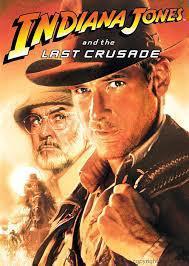 Indiana Jones and the Last Crusade (1989). Stoppard wrote the final draft of this screenplay, which just means that taste is… um… magnetic. In other words, I have liked Stoppard for much longer than I have realized. The Last Crusade is one of my most favorite movies of all time. I can’t imagine there are many of you who have not seen it. It is not high-minded or anything, but it is a truly classic adventure movie, the best of the trilogy. Be prepared for some gore.
Indiana Jones and the Last Crusade (1989). Stoppard wrote the final draft of this screenplay, which just means that taste is… um… magnetic. In other words, I have liked Stoppard for much longer than I have realized. The Last Crusade is one of my most favorite movies of all time. I can’t imagine there are many of you who have not seen it. It is not high-minded or anything, but it is a truly classic adventure movie, the best of the trilogy. Be prepared for some gore.
S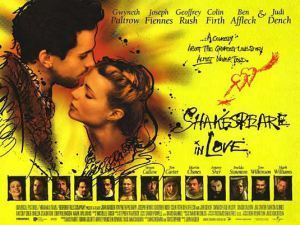 hakespeare In Love (1998). This movie has a lot of fans, and had a lot of buzz when it came to Oscar time in 1999. (It took some home.) As a teenage Shakespeare fan at the time, I recall being quite disappointed. According to IMDB, though, people who liked this movie also like Love Actually, About a Boy, and Sliding Doors, three of my other favorite movies. (They are all on my shelf, as you read.) Perhaps I should give this another view?
hakespeare In Love (1998). This movie has a lot of fans, and had a lot of buzz when it came to Oscar time in 1999. (It took some home.) As a teenage Shakespeare fan at the time, I recall being quite disappointed. According to IMDB, though, people who liked this movie also like Love Actually, About a Boy, and Sliding Doors, three of my other favorite movies. (They are all on my shelf, as you read.) Perhaps I should give this another view?
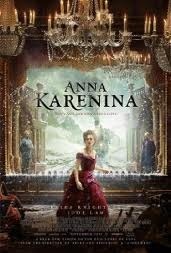 Anna Karenina (2012). I already reviewed this in a month recap, so here is the old review: “This one was the opposite of Les Miserables in that it impressed me when I did not expect to be impressed. I was honestly expecting it to be sort of sordid, but it wasn’t as bad as it looked on the previews. So then why was I watching? In the mood for something sordid? I consider Anna Karenina, the book, to be like a Russian cousin to the Jane Austen-esque novels, and while I have enjoyed those over the years (and many of their movies), I have never been able to get through Anna (the novel). I seem to get bored reading Russian lit. So I wanted to like it and to get a feel for the Karenina story. What I was happy to discover–contrary to where I thought the novel was headed when I have tried to read it–was that the movie did not simper around Anna’s liberation as a sexual being and a woman. Sure, she’s passionate and strong-willed and part of a restrictive society, but she is also selfish and stands in stark contrast to the calmer, more sacrificial love of Levin and Kitty. We aren’t convinced, in the end, that she is the best mom (understatement) and we also agree with Anna that her husband, the forgiver and loyalist, is the better person. Also… the movie is done so that you are acutely aware of the movie as creation; plenty of times the acting takes place in a theater set, characters passing between acts. I’m not really sure why the director took this direction [I do now; Tom Stoppard wrote it], but it was beautiful and reminded me a lot of Baz Luhrman.”
Anna Karenina (2012). I already reviewed this in a month recap, so here is the old review: “This one was the opposite of Les Miserables in that it impressed me when I did not expect to be impressed. I was honestly expecting it to be sort of sordid, but it wasn’t as bad as it looked on the previews. So then why was I watching? In the mood for something sordid? I consider Anna Karenina, the book, to be like a Russian cousin to the Jane Austen-esque novels, and while I have enjoyed those over the years (and many of their movies), I have never been able to get through Anna (the novel). I seem to get bored reading Russian lit. So I wanted to like it and to get a feel for the Karenina story. What I was happy to discover–contrary to where I thought the novel was headed when I have tried to read it–was that the movie did not simper around Anna’s liberation as a sexual being and a woman. Sure, she’s passionate and strong-willed and part of a restrictive society, but she is also selfish and stands in stark contrast to the calmer, more sacrificial love of Levin and Kitty. We aren’t convinced, in the end, that she is the best mom (understatement) and we also agree with Anna that her husband, the forgiver and loyalist, is the better person. Also… the movie is done so that you are acutely aware of the movie as creation; plenty of times the acting takes place in a theater set, characters passing between acts. I’m not really sure why the director took this direction [I do now; Tom Stoppard wrote it], but it was beautiful and reminded me a lot of Baz Luhrman.”
Stay tuned for reviews of Parade’s End by Ford Maddox Ford along with Stoppard’s TV adaptation, and also Samuel Beckett’s “Waiting for Godot,” which is supposed to be related in style and theme to Stoppard’s works.


October 24, 2013
It Could Have Been Worse
My intention was to find a writing group to join sometime this year. It was still sitting there on my list of Owl and Zebra goals when I was thrilled to find myself, one evening last spring, in a conversation with a new acquaintance about a burgeoning writing group which would happily include me, if I wanted it to. Score! It took a few months for the leader to get the thing off the ground (Bonus: the leader was not me, but a successful magazine editor), but we eventually got together over appropriately pretentious coffee (with the option of alcohol or tea) and made plans for our first real meet. That meet was set for the night before I left for vacation in October, and I volunteered the first one hundred pages of The Family Elephant’s Jewels for critique.
Now, I have not been in many writing groups. They pretty much all bunched up around my early college years, when I thought I was going to major in literature and was winkling my way into the writing community and onto the staff of the literary journal, newspaper, and yearbook. I had a very rough time with the director of all these groups (or would, eventually) and the community itself was very small, which led to some redundancies. But I have thrown a poem out there to be bled, before. And I’ve published a novel. And I’ve done twelve-step programs. And I’ve preached. And I’ve blogged. So I know what vulnerable is like.
But I have never had a novel critiqued, live. (My first novel was edited by a group of first readers (and an editor) who communicated with me by computer.)
First off, I arrived fashionably late (completely on purpose) to find the most punctual group of writers I have ever met all sitting around, waiting for our pizza. Then, we each went around and gave an account of our most recent writing exploits complete with current goals. (There are five of us, by the way.) Very smart. Then, we dove in. Or I should say, they dove in. On email, I had given a brief request for the type of criticism I would like (big-picture story issues, POV, etc.) and we had decided (I think) that the writer-on-trial did not have to stay mute. I congratulated myself on how poised I was: inclining my head and looking people in the eye; jotting pages of notes in my beat-up, hard-bound sketch book; remaining mute on issues I disagreed with on principal or emotionally; piping up with witty jokes about my own characters.
But really, the experience was all about my gracious hosts. They were kind, but not soft. They were questioning, but not excusing. And oh my goodness isn’t it the best experience to hear other people talk about your characters and your events like they’re real people and it’s a real thing? It’s one of my favorite parts about writing, akin to watching someone enjoy your child. When the group began and ended our session clearly hating one of my characters (Toby) and creating ways for him to come to his demise, it was richly rewarding.
Here is some other clearly awesome advice that I received:
Think of ushering a reader through a novel, like a video game. With each engaging and memorable thing you do, you get a gold coin. With each challenging thing you do, you lose them. So before challenging the reader (being mysterious, using a literary device, going descriptive, etc.), you have to ask yourself, “Do I have enough gold coins to play this out?”
Creating reader emotion about a character is like a battery which you can then plug in to other scenes that need more power to charge them. Do you need the reader on board with an idea? Pit a hated character against it.
Shorten my sentences.
Don’t make the readers figure out when and where and who.
Watch point of view and time changes.
And Toby is a jerk. He has to go.


October 14, 2013
What’s a Blogger To Do?
Let’s just say you have a burgeoning career as an artist and a blogger and you get sick. Or your kids get sick. Or you and your kids get sick right before an intense vacation. We all know that one of the cardinal rules for successful blogging and successful book sales is to remain engaged and be faithful. Over the past year, I have maintained a once-a-week blog for The Starving Artist, as well as a pretty-much-daily Tweet and a more-than-weekly update on Facebook and anywhere else it is needed (like LinkedIn or Goodreads or Amazon Author Central). I have this expert-induced fear that if I miss a regular blog or update or Tweet, my followers will fall precipitously.
This fear is not without basis.
My advice, first, is to take advantage of scheduling every time you know you will be gone. WordPress lets you schedule blogs in the future (or the past; we’ll get to that in a bit), which is a huge help, and HootSuite can schedule other things, such as Twitter and Facebook. If you know you are going to be away from the computer and from work, make it look to everyone else like you are still there, jaundiced and smelling of coffee, tapping away. Ideally, keep up your usual, loyal posts.
But what if–as happened to me two weeks ago–you get the flu, your kids both get the flu, and you are about to embark on a six day, six parks tour-de-Orlando? You have no time or energy to tackle future posts or wrangle with HootSuite? Here is my advice, then:
Relax. It is true that absence can hurt your web presence and turn regular followers (and new followers) away. But probably not in droves. Life happens. Unless you have an amazing counterpart who can log on and write you a blog, clever Tweets, and smile through a Facebook status, you need to accept that life happens to you, too. You might as well get a nap out of it.
Assess your present career circumstances. Are you in the middle of a Kickstarter bid? An e-book giveaway? Did you just release a new book? I was at a crucial juncture in my own writing, a bid for funds, a couple years ago, and someone in my family passed away. I lost that bid, miserably, because I completely walked away from it. There are times in your career when staying glued to the internet will be of great importance. When a trip to Hawaii beckons, or you get the sniffles, you’re just going to have to decide (for the millionth time that year) how important a successful career is to you. Schedule vacations and holidays for times when your commitment to the laptop is less demanding.
Then, try harder. I know I told you to relax. I was assuming the situation was dire, in which case I repeat: relax. But in the event that you have a head cold and a blog tour clashing, you are going to have to gird up those loins and get behind the computer screen. Know what your followers and readers expect of you, and do just that. Being a writer (or pretty much anything else) never comes at the ideal time. I used to say about having babies that if we waited to have them until the perfect time, we would never have them. The life and career of the author is riddled with choices and with temptations to go astray. Make another pot of coffee or get those ten pages in? Go grocery shopping or get another ten pages in? Suck up my snot, take a Tylenol chased with an Airborne and connect with my readers? Yes.
When all else fails, fudge it. Part of the brilliance of scheduling is being able to schedule into the past. You can’t do it on Hootsuite (or Facebook or Twitter), but you can do it on WordPress. It’s too late to fool those regular followers, but it’s not too late to fool new people who are checking out your site or your blog for the first time. My rule of thumb is this: when you return from an unexpected absence, make sure your blog looks like you never left. Besides ugliness and cheapness, there is nothing that is going to turn a potential follower off more than you last blog entry being a month ago or gaps of a month in your blogroll. (Except unprofessionalism. That’s next.)
And above all else, stay professional. My mantra as an indie press, self publish author and publisher is Always Be Professional. From the way I dress to curl up at the library with my book notes, to buying a web domain, I make sure that I am as professional as I can possibly be. That means no cheesy, hasty posts letting everyone know that you are down with a stomach bug and you’ll rejoin them later. If you can turn your absence into a clever blog about blog absence (oh, I am so witty), then make that happen. Otherwise, pretend you have a boss. And ask yourself what Stephen King would do. Take a look at your favorite big-time author’s website. Is there a toothache play-by-play? Doubt it. Is there consistent and current build up to their next big thing? Highly suspect it.
So that’s what you want to do. Life happens. Relax. Then assess and try harder. If needed, fudge it. And make sure you stay professional. Eventually, oh eventually, all those hard choices may pay out. But hey, they can’t if you don’t.


October 7, 2013
Series Review: Harry Potter
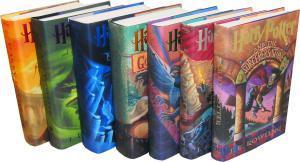 Harry Potter book series, by J. K. Rowling and published by Bloomsbury and Scholastic Inc, 1997-2007 (seven books).
Harry Potter book series, by J. K. Rowling and published by Bloomsbury and Scholastic Inc, 1997-2007 (seven books).
As many times as I have mentioned Harry Potter or J. K. Rowling, I have not officially done a review of the book series. So in honor of October, Halloween, and our recent trip to The Wizarding World of Harry Potter at Universal Studios, Orlando; here it is.
The list of the books, from first to last:
Harry Potter and the [Philosopher's] Sorcerer’s Stone
Harry Potter and the Chamber of Secrets
Harry Potter and the Prisoner of Azkaban
Harry Potter and the Goblet of Fire
Harry Potter and the Order of the Phoenix
Harry Potter and the Half-Blood Prince
Harry Potter and the Deathly Hallows
It is no secret that I like these books. It took years to convince me to read them, and I only picked up once my daughter requested that we read the second one aloud at bedtime. From there, I moved quickly through the rest of the series and before I knew it, we had a Harry Potter birthday party, owned all the movies, and were carousing on Flight of the Hippogriff. How did it happen?
I’m not sure how is as important as what, here. You see, I’m not the only person sucked into this series, but only one of millions, completely unoriginal. Harry Potter is arguably the most successful book series ever written, popular (and fiscally dominating) with not only children, but with people of all ages. I am not as devoted to it as to Anne of Green Gables, but for the past three years I have read the complete series once a year, at a point when I most needed to escape.
Now, why? Harry’s setting is a perfectly encapsulated world, both like and unlike our own in equal measure, where one can escape for seven easily-readable books. Total immersion. Characters are fully drawn and likable (or hatable, as the need arises). Themes involve everything from death to romance to coming-of-age. And, most importantly (I think), nothing is left untied. What comes up in the first sentences resolves with the last few pages. Nothing changes. Nothing is inconsistent. It’s the perfect package. (Whereas miraculously nothing comes from nowhere, there are some plot lines that are extraneous and don’t eventually blossom, like Hermione and elf rights, or the Deathly Hallows.)
The main problem? Writing style. Rowling is only, prose-wise, a mediocre writer. If you are used to high literature, this can be distracting. Plot-wise Rowling is the best of writers. And character-wise, she has created some of the most memorable and iconic characters in all of literature. Plus, she’s made a ridiculous amount of merchandise deals and money. What any of us authors wouldn’t do to be her.
A secondary problem? Witches. Plenty of people won’t touch this series with a ten foot pole because they believe the occult is not a trifle. However, others have found it appropriate to draw a distinction between the true occult and the fantasy genre. Fantasy has a long history of using legendary characters–like witches–to open the imagination to possibilities and stand for moral points. These characters have become typecasts for the collective imagination and, in most cases, are no more like a “real” witch than Wilbur is like a real pig. You have to decide for yourself if you can go along with that.
One of my major beefs with this series (and something I tell myself I will never do) is the increasing age of the targeted audience as the series progresses. Sure, I understand that Harry is eleven to start and eighteen by the time it ends, but I don’t believe this makes it necessary to age the audience and the appropriateness level. This might have worked when Rowling was releasing and her preteen readers were aging themselves, but now, with the whole series on the bookshelf, it becomes problematic for young readers who start the series and are aged out. Aw-kward.
So, in short, if you haven’t encountered Harry Potter already, you are the only one left. If you are avoiding it, I would recommend that you stop fighting the current and make yourself finish the first two books. (The series improves as it continues.) If you have a moral objection, so be it. Otherwise, sit back and enjoy the ride.
* * *
A bonus recipe:
This is the butterbeer that FOX news released with the launch of The Wizarding World of Harry Potter. (By the way, the park is great fun, if you happen to be in Orlando.) It is the recipe that I use each Halloween and then my family anticipates eagerly.
BUTTERBEER
In a small saucepan over medium, combine 1 cup brown sugar with 2 tablespoons water. Bring to a gentle boil and cook, stirring often, until the mixture reads 240F on a candy thermometer.
Stir in 6 tablespoons butter, 1/2 teaspoon salt, 1/2 teaspoon cider vinegar and 1/4 cup heavy cream. Set aside to cool to room temperature.
Once the mixture has cooled, stir in 1/2 teaspoon rum extract.
In a clean, cool, medium bowl, combine 2 tablespoons of the brown sugar mixture and 1/2 cup of heavy cream. Use an electric mixer to beat until just thickened, but not completely whipped.
To serve, divide the brown sugar mixture between 4 tall glasses. Add 1 bottle premium cream soda to each glass, making sure it mixes as you pour. Spoon the whipped topping over each and enjoy the sickly sweet treat that is Butterbeer.
* * *
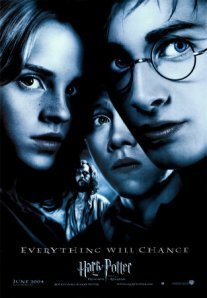 And a word about the movies. I appreciate them, I am addicted to them, I don’t love them. They are one of the only successful complete series ever made, start to finish in a timely manner. They have some issues. One, they had to be changed to fit the new format, and I miss a lot of the subtleties and minor plot lines/characters. Two, they were thrown around between directors, and combined with the aging characters and the increasing length of the books, they can be very different, especially in tone and age-appropriateness. What they do provide is a stunning display of special effects, a ridiculous cast of famous British actors, and a visual for the alternate world of Harry Potter. Watch them if you want, or don’t if you don’t. The books are still better.
And a word about the movies. I appreciate them, I am addicted to them, I don’t love them. They are one of the only successful complete series ever made, start to finish in a timely manner. They have some issues. One, they had to be changed to fit the new format, and I miss a lot of the subtleties and minor plot lines/characters. Two, they were thrown around between directors, and combined with the aging characters and the increasing length of the books, they can be very different, especially in tone and age-appropriateness. What they do provide is a stunning display of special effects, a ridiculous cast of famous British actors, and a visual for the alternate world of Harry Potter. Watch them if you want, or don’t if you don’t. The books are still better.


September 30, 2013
Month Recap: Fall and Not Fall
Before I get to my movie and TV reviews, I will share a few thoughts on e-books. When it comes to my Kindle, I go kicking and screaming. I really still like the actual book (as much as I still enjoy opening up a canister of new film and giving it a whiff and keep a typewriter by my bed). I love the library. I love the book store. But I bought an e-reader because I was about to release an e-book and, well, life without one would have become a little awkward. Besides the Bible and the dictionary, though, I don’t use it that much. Until this past August, when I received three books for my birthday in e-book form and also promised a couple fellow authors I would read their free offerings. I didn’t pout or stage a sit-in. I just read the books.
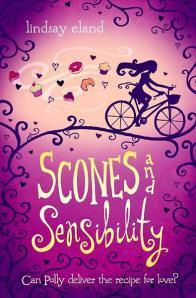
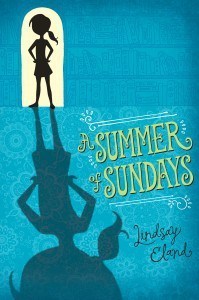 There is something nice about holding that slim, ergonomic thing in your hands (mine is no-frills, liquid paper, no distracting apps or WiFi) and flicking through the pages. At least I survived. And I enjoyed some of the books I read. As for the self-published ones, I am not going to comment here; it seems like a conflict of interests (unless I really loved them, which I didn’t). But for pre-teen girls, I would recommend Lindsay Eland’s Summer of Sundays and Scones and Sensibility, especially for bookish girls. They had their high points and low points, but overall I found them engaging and certainly harmless, with lessons that call a girl out of self-absorption and into uniqueness.
There is something nice about holding that slim, ergonomic thing in your hands (mine is no-frills, liquid paper, no distracting apps or WiFi) and flicking through the pages. At least I survived. And I enjoyed some of the books I read. As for the self-published ones, I am not going to comment here; it seems like a conflict of interests (unless I really loved them, which I didn’t). But for pre-teen girls, I would recommend Lindsay Eland’s Summer of Sundays and Scones and Sensibility, especially for bookish girls. They had their high points and low points, but overall I found them engaging and certainly harmless, with lessons that call a girl out of self-absorption and into uniqueness.
On to visual entertainment.
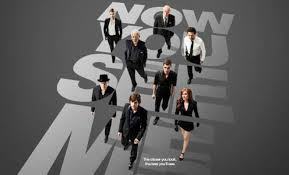 Now You See Me (movie, 2013). This one kept me guessing, which, if you know me, means that I liked it. I might have felt a little fleeced at the end, but it just made me want to go back and watch it again. (Which I didn’t. How much time do you think I have on my hands?) Recommend.
Now You See Me (movie, 2013). This one kept me guessing, which, if you know me, means that I liked it. I might have felt a little fleeced at the end, but it just made me want to go back and watch it again. (Which I didn’t. How much time do you think I have on my hands?) Recommend.
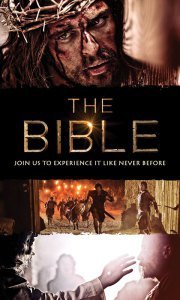 The Bible (TV miniseries, 2013). When I jotted this down, I thought we would have seen more of it by now. However, we only watched the first part. I like it. It’s not maybe exactly the show I would make it, but it is always fun to see stories like that come to life. And with so much material to deal with, you have to make a whole lotta choices. Would recommend, with reservations. I imagine that we will one day own this; a way to illustrate the Bible to kids who are growing up in a media culture and also to keep the stories alive for ourselves.
The Bible (TV miniseries, 2013). When I jotted this down, I thought we would have seen more of it by now. However, we only watched the first part. I like it. It’s not maybe exactly the show I would make it, but it is always fun to see stories like that come to life. And with so much material to deal with, you have to make a whole lotta choices. Would recommend, with reservations. I imagine that we will one day own this; a way to illustrate the Bible to kids who are growing up in a media culture and also to keep the stories alive for ourselves.
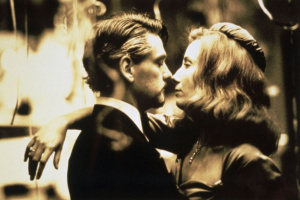 Dead Again (movie, 1991). I like this movie, but not as much as I wanted to. I don’t know if it’s because it’s dated or because it was profoundly disturbing for me to see Kenneth Branagh and Emma Thomson speaking with American accents. You don’t have to swallow the idea of reincarnation just to enjoy the twisted plot and throw-back to a Hollywood of times gone. Called a “crime thriller” and “neo-noir,” and featuring some very accomplished actors, it is a unique piece of film history.
Dead Again (movie, 1991). I like this movie, but not as much as I wanted to. I don’t know if it’s because it’s dated or because it was profoundly disturbing for me to see Kenneth Branagh and Emma Thomson speaking with American accents. You don’t have to swallow the idea of reincarnation just to enjoy the twisted plot and throw-back to a Hollywood of times gone. Called a “crime thriller” and “neo-noir,” and featuring some very accomplished actors, it is a unique piece of film history.
Nim’s Island (movie, 2008). While my children really enjoyed this film, I didn’t so much. It was only okay. It was predictable and goofy (not in a good way).
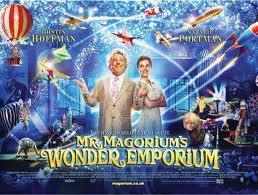 Mister Magorium’s Wonder Emporium (movie, 2007). This is my new favorite movie. Here and there, I cringed as something was over done, but on the whole, it is a great movie full of magic and life and imagination, imagination being the key word here. Don’t go into it looking for the best plot line or Oscar-winning performances (although Dustin Hoffman’s is pretty darn good), but just release yourself back to your own childhood, to limitless possibilities, to impossibilities, and to the light touch of small things. Reminiscent of Roald Dahl.
Mister Magorium’s Wonder Emporium (movie, 2007). This is my new favorite movie. Here and there, I cringed as something was over done, but on the whole, it is a great movie full of magic and life and imagination, imagination being the key word here. Don’t go into it looking for the best plot line or Oscar-winning performances (although Dustin Hoffman’s is pretty darn good), but just release yourself back to your own childhood, to limitless possibilities, to impossibilities, and to the light touch of small things. Reminiscent of Roald Dahl.
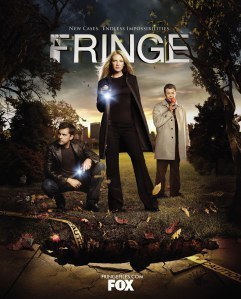 Fringe (TV series, 2008-2013). I am trying so hard to love this show because it is J. J. Abrams and the concept is fun (Twilight Zone meets CSI, so a lot like X Files). I mean, fringe science provides endless show ideas. But I am just not sold on Olivia Dunham, the main character, and–even more disappointingly–the show-specific plots are too easy. (First person you see on camera dies, then another, and then the Fringe Division comes in just in time to save the third. Hints so broad we know the secrets, sometimes within minutes.) Plus, we are now on season two, and where-oh-where is the love interest between Olivia and Peter? And the triangulation with Astrid? We all know it should be happening, so why not some hints? And yet I keep watching.
Fringe (TV series, 2008-2013). I am trying so hard to love this show because it is J. J. Abrams and the concept is fun (Twilight Zone meets CSI, so a lot like X Files). I mean, fringe science provides endless show ideas. But I am just not sold on Olivia Dunham, the main character, and–even more disappointingly–the show-specific plots are too easy. (First person you see on camera dies, then another, and then the Fringe Division comes in just in time to save the third. Hints so broad we know the secrets, sometimes within minutes.) Plus, we are now on season two, and where-oh-where is the love interest between Olivia and Peter? And the triangulation with Astrid? We all know it should be happening, so why not some hints? And yet I keep watching.


September 24, 2013
Series Review: Anne of Green Gables
 The eight book Anne of Green Gables series by L. M. Montgomery, published from 1908-1939, and read in the Grosset & Dunlap Illustrated Junior Library version (Anne of Green Gables), Signet Classic (Anne of Avonlea), and Bantam Classic (all the rest).
The eight book Anne of Green Gables series by L. M. Montgomery, published from 1908-1939, and read in the Grosset & Dunlap Illustrated Junior Library version (Anne of Green Gables), Signet Classic (Anne of Avonlea), and Bantam Classic (all the rest).
There is no avoiding disclosing that I already love these books. I read them at least once a year, and have for several years. When I got to this year’s hankering for reading through the series, I went ahead and moved them up on the Read 1000 list. Anne of Green Gables is securely on that list (and not by my own recommendation), so we’re all good there. I just expanded out to the whole series and made some new observations as I went along.
Now, these books are highly revered by many, many people, In fact, Prince Edward Island–where the author spent some of her life and where Anne takes place–is a tourist haven for Anne fans, and they come in droves to charter planes and experience the Anne museum, the Anne tours, the Anne gift shops, and savor a bit of the beautiful, idyllic scenery that breathes through the Anne books. I wanted to take my honeymoon there, but we were unable to afford it, especially compared with the free stay in an Everglades condo that came offered as a wedding gift. But I still plan on going, sometime. My husband is well aware of this. It’s like Harry Potter for romantics. You can easily score Anne of Green Gables embroidered pillows, lithographs, costumes, or even soda. Not to mention the musical.
L. M. Montgomery (Lucy Maud) lived in the late 1800s and early 1900s around the east end of Canada. She wrote prolifically as a novelist and also for periodicals (back when they carried fiction on a regular basis). Many of her short stories are collected in books and her twenty novels are still in publication (including three other shorter series, for Emily, Pat, and The Story Girl). Her writing was popular in its time, beginning with publications of short stories upwards of twenty per year, but nothing could or would surpass the love and respect for her very first novel, Anne of Green Gables.
Anne is a bit feminine for most men, or even boys, to read. It is also a little flowery and descriptive for the modern reader, and perhaps even a little short for its genre (by modern standards). But what makes it so popular? I can think of no better reason than to say that Anne is a book of complete escapism, and where it takes the reader is not only (or was not only) a real place, but also one that is wholesome and hopeful. It hearkens back to simpler times, to a society with clear morals and small interactions, of looking to the future with optimism and adventure and living in the present with hard work and a noble outlook. Who wouldn’t want to go there, every once in awhile? As I always say, I not only enjoy the books, but when I am done reading them, I know what kind of person I want to grow up to be.
The story is pretty straight-forward. Anne is an orphan who has been handled roughly (details dealt with tactfully) over her first ten years, and is accidentally adopted by a brother and sister in the backwoods, small town of Avonlea, Prince Edward Island, Canada. Anne is overly imaginative and accident-prone, but also just a good soul and full of positivity. Her pride pits her against her faith, and that is the struggle that we see unfolding in her relationships, including her relationship with classmate Gilbert Blythe. She grows up, faces various hardships and “bend(s) in the road,” and becomes a woman with a family of her own (in the later books).
Also, note that the book is considered children’s literature. My aunt gave me this book for my eleventh birthday, but I found it too slow and descriptive, at the time. I read it through for the first time when I was fifteen. I have loved it ever since then, and can fully appreciate it as an adult. If you can get your younger reader through the first couple chapters, they, too, might fall in love with Anne’s scrapes and antics, her imagination and spirit. She is, after all, eleven years old.
At fifteen, I quickly acquired the rest of the Anne series, read it all, and then bought every Montgomery book that they had in the bookstores. (Remember those days before internet stores?) I am never disappointed with Montgomery, although some of her books are better than others. As for the Anne series, I think the first and the last books (Anne of Green Gables and RIlla of Ingleside) are the best, with the fourth, Anne of Windy Poplars, being my least favorite (I think because of the epistolary form). Of course, we NEED all those books because we want so desperately to see how Anne and Gilbert–one of the classic loves of all literature–turn out. Next up, I would recommend the three book Emily trilogy.
I don’t have much else to say about Anne of Green Gables or the series (like anything overly-literary). I would highly recommend it to young girls up to full-grown women, or for family story time. Once you get through Rachel Lynde’s sitting and watching, things pick up and Montgomery’s anecdotes are sometimes funny, sometimes exasperating, sometimes heart-wrenching, but they always come with a little of Marilla’s characteristic dose of moral and Anne’s heavy-handed does of humanity.
(One disclaimer: according to the times, there are some non-PC moments in these books. If I remember correctly, they are almost all directed toward French immigrants.)
 (I’ve also heard there are some great TV productions and movies of the Anne series or based on Montgomery’s writing about Avonlea. I can not, however, do you the service of screening them for you. I am rather stubborn on this point. Anne is so solidified in my own mind that it would disturb me greatly to see an actress in the role (and the other characters, as well). I don’t need the movies, I have the books. But you may want to give them a try. I have seen some of the animated series on PBS. It doesn’t mess with my sense of peace. It is acceptable, but nothing too notable. The 1980s movies Anne of Green Gables and Anne of Avonlea are, I believe, the most beloved.)
(I’ve also heard there are some great TV productions and movies of the Anne series or based on Montgomery’s writing about Avonlea. I can not, however, do you the service of screening them for you. I am rather stubborn on this point. Anne is so solidified in my own mind that it would disturb me greatly to see an actress in the role (and the other characters, as well). I don’t need the movies, I have the books. But you may want to give them a try. I have seen some of the animated series on PBS. It doesn’t mess with my sense of peace. It is acceptable, but nothing too notable. The 1980s movies Anne of Green Gables and Anne of Avonlea are, I believe, the most beloved.)
I’ll limit my quotes to the first three books (which, by the way, were not the first three written or published. The series was written and published quite out of order and was, I believe, determined partly by fan request).
Anne of Green Gables
“‘And as for the risk, there’s risks in pretty much everything a body does in the world. There’s risks in people’s having children of their own, if it comes to that–they don’t always turn out well’” (p15).
“…a mere man must have some vent for his emotions” (p40).
“‘You’re both queer enough, if that’s what you mean by kindred spirits’” (p47).
“If you must borrow trouble, for pity’s sake borrow it handier home’” (p153).
“All things great are wound up with all things little” (p176).
“‘Oh, of course he’s good,’ agreed Anne. ‘but he doesn’t seem to get any comfort out of it. If I could be good I’d dance and sing all day because I was glad of it” (p216).
“‘The trouble with you, Anne, is that you’re thinking too much about yourself. You should just think of Mrs. Allan and what would be nicest and most agreeable to her’” (p226).
“…A little ‘appreciation’ sometimes does quite as much good as all the conscientious ‘bringing up’ in the world” (p243).
“It takes all sorts of people to make a world, as I’ve often heard, but I think there are some who could be spared’” (p125).
“‘Not failure, but low aim is a crime’” (p131, to quote James Russell Lowell).
“And I think the violets are little snips of the sky that fell down when the angels cut holes for the stars to shine through. And the buttercups are made out of old sunshine; and I think the sweet peas will be butterflies when they go to heaven’” (p166).
“‘You can’t like different people the same way’” (p167).
“‘I’d like Kerrenhappuch if it happened to be your name. I think people make their names nice or ugly just by what they are themselves’” (p191).
“At seventeen dreams do satisfy you because you think the realities are awaiting you further on’” (p199).
“…every really beautiful thought was religious, no matter what it was about, or what day it was thought on’” (p240).
“‘I’d rather look like you than be pretty’” (p243).
“‘Changes ain’t totally pleasant but they’re excellent things’” (p266).
“‘In this world you’ve just got to hope for the best and prepare for the worst and take whatever God sends’” (p268).
“‘I’m glad to be a woman with a garden and a work and a sorrow’” (p276).
Anne of the Island
“It is never nice to have our old shrines desecrated, even when we have outgrown them’” (p2).
“‘We musn’t let next week rob us of this week’s joy’” (p3).
“‘I fancy it’s the unexpected things that give spice to life’” (p4).
“‘As Phil said, it was the difference between being born and being made’” (p48).
“‘…The life of heaven must be begun here on earth’” (p108).
“New shoes are smarter than old ones, but the old ones are more comfortable’” (p123).
“‘Never mind. Thank goodness air and salvation are still free’” (p126).
“‘What is to be, will be,’ said Mrs. Rachel gloomily, ‘and what isn’t to be sometimes happens’” (p178).
“She felt very old and mature and wise–which showed how young she was” (p182).


September 17, 2013
Era of the Villain
We are living in the era of the villain. I mean, first there was Lolita, and now there is Dexter. And how many books, movies, TV shows, plays (etc.) which would otherwise be pretty classical in scope, these days, have a very sympathetic take on the villain? Suddenly, vampires are boyfriends and serial killers are saviors. The Ones are really Us, and the seductress is a superhero. Are they even villains, anymore?
I suppose it is the result of being in the era of psychoanalysis combined with a culture of equality (or tolerance, or however you might put it). I mean, we can’t just damn the bad guy. He has feelings, too. And motives. And a complicated reason that he killed the hero’s girlfriend.
Now, I am all for writing sophisticated, in depth characters. And I abhor a flat villain as much as I abhor a flat hero. None of us are painted with only a white or only a black brush, and our characters suffer when we paint them that way. But then again, I kind of like villains to stay villains, for the sake of story, for the sake of justice. After all, story is not always (or even often) about representing life exactly the way we find it. That would be boring, not to mention repetitive. But story does define or magnify things for us, pick things up and turn them around so that we see them differently. And rarely do they mimic life in a one-to-one way. Villains have long been there to strengthen our moral compass (even if that means changing it, a bit), but I’m not sure I like villains completely overthrowing our moral compass.
Let’s put it this way; it’s one thing for Javert to question his motives and to perhaps even feel guilty–it would be perfect for these people to have families that love them, even, and some respectable attributes!–but in the end, I know that what Javert did was wrong and he deserves to get the raw end of this literary deal (even if, in a tragedy, he does not). Even if that means I, too, deserve his fate.
And while I had about 100 examples in my head as I formulated this theory over the past several months, of course I can’t think of them right now. Here are the few I could think of off the top of my head:
Sylar, from the TV series Heroes (although his is a case of repentance and change, I think, so that wouldn’t count)
multiple characters from the TV series Lost, including Sawyer (although his is a case of seeing him though the lens of another character’s love, so I’m not sure that would count, either)
Dexter, of course
Are we under-shadowing the heroes and heroines in order to make this happen?
Does anyone else have some thoughts on this? Some examples for us?
Do you write literature with non-villains? Why?
Does it bother your sense of justice to see this trend?


September 10, 2013
POV and Other Narrative Modes
I have been assailed lately by books in the present tense, which I am assured is not only my experience. (It might be a trend, if not just a thing that lots of blossoming authors do before they learn better.) At first, I wasn’t sure what it was about these encounters that was really disturbing me, until I did some quick research. It seems, most of the time at least, reading in the present tense is distracting. So, I wanted to explore this further, as well as other narrative mode issues and basics. It’s one of those things that is important, but can be more complicated than is good for any of us.
Personally, as a new novelist, I struggled with switching tenses between past and present. (I do it as a blogger, all the time. My apologies.) Thanks to my editor, I believe that was all sorted out before Benevolent hit the book shelves AND I have learned enough that I do it less, on the first draft, now. I also believe that I like to switch voices between omniscient and limited. I find myself wondering if this is a matter of “voice” (as in, my personal sound as a writer), instead of a strict need to stick to one “voice” (as in, narrative voice). Wow, that’s a little confusing.
Here is a primer, needed as much by me as by anyone who might read this. For the purposes of The Starving Artist, I am talking in terms of fiction writing, and mostly in terms of novels.
Narrative mode is the way that a story is told. It can be broken down into point of view, voice, and time tense.
POINTS OF VIEW
First Person–In first person, the narrator participates in the story. Their account can be untrustworthy or skewed, since they are involved and limited (like all of us). Occasionally, first person can be in the plural. The first person narrator can be a major or a minor character. (Rarely, this character can be omniscient.) Examples: To Kill a Mockingbird, Harper Lee; Jane Eyre, Charlotte Bronte. I, me, mine. Our, ours.
Second Person–you, your, yours. The narrator speaks to the reader. Used very rarely (except in song-writing). Examples: Choose Your Own Adventures; Absolom! Absolom!, William Faulkner.
Third Person–Narrator is not a character, but can reveal how characters feel. He, she, they, it. (Never an “I” or “you.”) Examples: Just about any novel you’ll pick up on your bookshelf. For better understanding of this point of view, see narrative voice, below.
Generally, books choose one POV and stick to it, but sometimes they change perspectives. Examples: Harry Potter series (third person limited, except for occasional omniscience to other characters); The Poisonwood Bible (first person with occasional third person).
More complicated points of view can include flashbacks (Edith Wharton’s Ethan Frome), serial first person points of view (William Faulkner, including The Sound and the Fury), or epistolary writing (using letters from one or more persons, see below).
NARRATIVE VOICE
Character–The narrator is a living being. May or may not be a part of the story or reliable (as opposed to unreliable, subjective, or even naive), but is an identifiable entity. If the narrator is in the action, they are called the viewpoint character. Examples: To Kill A Mockingbird, Harper Lee; The Great Gatsby, F. Scott Fitzgerald.
Third Person Voices
Objective–Objective narrator, never divulging more than action and dialogue (never character’s feelings, etc). Unbiased narration, without interpretation. Can reveal what characters do not know. Examples: Hills Like White Elephants, Ernest Hemingway.
Omniscient–Narrator knows and can reveal everything about all the characters. Examples: Jane Austen, Charles Dickens, The Lord of the Rings trilogy, J. R. R. Tolkien, and lots and lots of others. Also universal omniscient, in which the narrator reveals things even the characters do not know. Example: A Series of Unfortunate Events series, Lemony Snickett.
Subjective/Limited (Omniscient)–Narrator knows and can reveal everything about only one character, either major or minor. Examples: Nineteen Eighty Four, George Orwell; most of Harry Potter series, J. K. Rowling.
Stream of Consciousness–Attempt at replicating the thought process. Is usually first person. Examples: Ulysses, James Joyce; To the Lighthouse, Virgina Woolf.
Epistolary–Conveying the action through a series of letters, by one or more persons. Examples: Frankenstein, Mary Shelley; Bridget Jones’ Diary, Helen Fielding.
TIME TENSE
Past–Events in the story take place before the present or before narration was composed. Examples: Almost all books. Had, was, ran.
Present-- Events are depicted as taking place now. Have, is, runs.
Future–Events take place in the future. Examples: None, that I could find anywhere. Will have, will be, will run.
Of course, all of these narrative modes can change throughout the story, but that is not as common as sticking with one, at least basically. Purposefully changing narrative mode has been used to very successful, and powerful, effect. Randomly switching around, on the other hand, is the mark of a novice writer.
So here is the thing. Most writing is third person omniscient in past tense. Hardly ever are you going to find a second person epistolary in present tense. Or whatever. The main reason? Using narrative modes other than the common can be very distracting to the reader. Changing narrative modes can also be distracting. Or at worse, annoying. We are used to reading past tense, used to reading in the third person. The very thing that you choose to make your story stand out or draw attention to something special about your story (like how cool and collected the antagonist’s best friend is or how a character is going to die and become a ghost at the end of the events related), may be what keeps people from reading the thing. But that doesn’t mean you can’t or should never. There are examples of successful execution in most of the narrative modes, with the exclusion of future tense and very few in objective third person.
Dubious that anyone should attempt present tense, I surfed the internet and came up with these examples:
The Hunger Games series, Suzanne Collins. “I stare down at my shoes, watching as a fine layer of ash settles on the worn leather.”
The Time Traveler’s Wife, Audrey Niffenegger. “The library is cool and smells like carpet cleaner, although all I can see is marble.”
House of Sand and Fog, Andre Dubus III. “I pull my sack over my shoulder and to Mr. Torez I say, ‘In my country, I could have ordered him beaten.’”
High Fidelity, Nick Hornby. “’Have you got any soul?’ a woman asks the next afternoon.”
Parts of David Copperfield, Charles Dickens. “‘And how is Master David?’ he says, kindly. / I cannot tell him very well. I give him my hand, which he holds in his.”
And actually, a brief categorization-in-the-mind of my own writing leaves me a little surprised: I thought I always wrote third person past because it is the most natural, but I have a recent short story in the limited voice and write many of my poems in the second person.
So next time I start a poem, story, or book, I am going to ask myself, “What is the point of view, voice, and time tense?” And then, “Is that the best narrative mode for this work?” If I come up with any answer other than the most common, I will have to weigh two additional things: will I be able to keep the reader reading through the distraction of it? and do I think I can pull it off, as an author?
____________________
For further reading on first versus third person writing, see a great blog article by a fellow author, Nathan Bransford.


September 3, 2013
Book Review: Hamlet
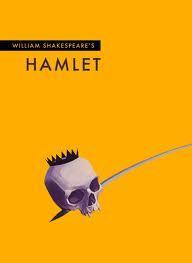 “Hamlet,” or “The Tragedy of Hamlet, Prince of Denmark,” William Shakespeare, app. 1600. Read, not the version shown here, but from my leather-bound William Shakespeare: The Complete Works, published by Gramercy Books in 1975. Bonus reviews of four Hamlet movies and Tom Stoppard’s Rosencrantz and Guildenstern Are Dead.
“Hamlet,” or “The Tragedy of Hamlet, Prince of Denmark,” William Shakespeare, app. 1600. Read, not the version shown here, but from my leather-bound William Shakespeare: The Complete Works, published by Gramercy Books in 1975. Bonus reviews of four Hamlet movies and Tom Stoppard’s Rosencrantz and Guildenstern Are Dead.
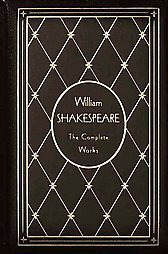 William Shakespeare (assuming that was his name and person) was a poet and playwright who lived from 1564-1616, in Stratford-Upon-Avon, England. He was a member of the Lord Chamberlain’s Men theatrical company. There is not much known about his life or about the man (leading to speculation about actual authorship), but it is clear that he is one of the most influential artists of all time, unrivaled in talent, insight, and range, let alone quality output. Shakespeare’s works have generated countless story-lines, character types, expressions, and even words, making him an immense force in modern language, writing, playacting, and art.
William Shakespeare (assuming that was his name and person) was a poet and playwright who lived from 1564-1616, in Stratford-Upon-Avon, England. He was a member of the Lord Chamberlain’s Men theatrical company. There is not much known about his life or about the man (leading to speculation about actual authorship), but it is clear that he is one of the most influential artists of all time, unrivaled in talent, insight, and range, let alone quality output. Shakespeare’s works have generated countless story-lines, character types, expressions, and even words, making him an immense force in modern language, writing, playacting, and art.
The story of Hamlet was based on the Dane Amleth, recorded in history by Saxo Grammaticus. Shakespeare might have written an earlier telling of the story, known today as Ur-Hamlet, and three distinct versions survive today, each with particular omissions and inclusions. “Hamlet” is Shakespeare’s longest play, one of his most complex (leading to wide and various interpretation) and respected, and his most popular during his lifetime. It is known as the most filmed story in history, after Cinderella, and leads many theaters in number of performances over time.
There are different ways to approach plays as literature. Even a simple reading of play reviews on Amazon will show that some believe a reading of a play can add to it, while others see the performance of the play as the true actualization. I tend to believe more in the performance as the thing, so I am not sure that reading is really the fairest way to judge a play. However, what performance would you judge a play on, anyhow? Perhaps a conglomeration of the performances? Or a perfect performance idealized by a professional read of the play? That’s a bit too abstract for us, so I’ll just stick to judging the play by my read and then chatting about any video performance I could get my hands on.
Now, due to passage of time between Shakespeare’s writing and the modern man, most people can not just pick up Shakespeare and read it without help. To us, the language is archaic and difficult, and there are plenty of allusions and assumptions that need notes to fill us in. On the other hand, since Shakespeare is taught widely in English-speaking schools and still culled for movies and other entertainment, many of us can eke our way through. I happen to love Shakespeare, so my returning to his works over time has left me with an ability to read it straight, for the most part. However, it is helpful to many to read a synopsis of the play before reading the play, keeping a resource handy to interpret certain passages or confusing words. Unfortunately, full appreciation of Shakespeare is lost on all but the experts, since we are so far removed from his times and his culture. However, even a vague understanding can lead to vague awe.
I find myself impressed by how many thoughts and phrases emerge from “Hamlet.” Within four lines appear “Neither a borrower nor lender be,” and “To thine own self be true.” The text is rife with common quotations and high points of theatrical history. However, it is not one of my favorite Shakespearean plays. When I started to read it (again; I’ve read it before), I was confused by Hamlet’s character, not sure whether he is mad or not and so forth. By the time I was done with my reading and all my viewings, I found Hamlet to be a spoiled prince baby, repugnant in the way he deals with others around him, as if they are cheap or mere playthings. It’s also not my favorite Shakespearean storyline, because, although it is pregnant with great twists and turns, it sort of lacks a flow which makes some of his other plays sleeker.
But of course, “Hamlet” is one of the standards of world literature, and I would not skip it or ignore it just because the Prince of Denmark is confusing or juvenile. Better critics than I put it right at the top of their lists. And anyway, part of the experience is in the interpretation, in seeing it performed, which leads us to the movies I could find.
H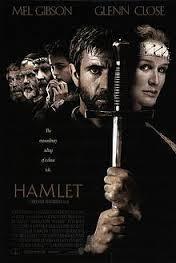 amlet, 1990, with Mel Gibson. I started with this one because I was pretty sure it was the classic school-viewed version of the play. Perhaps I had seen it in high school? In the end, it wasn’t my favorite. Gibson was surprisingly cute and endearing, but besides that and the hairdos, I was not swept off my feet by any specific things.
amlet, 1990, with Mel Gibson. I started with this one because I was pretty sure it was the classic school-viewed version of the play. Perhaps I had seen it in high school? In the end, it wasn’t my favorite. Gibson was surprisingly cute and endearing, but besides that and the hairdos, I was not swept off my feet by any specific things.
 Hamlet, 1996, Kenneth Branagh, nominated for an Academy Award. Alright, so I am still watching this (some of these videos are loooong), but Kenneth Branagh is one of the foremost Shakespearean actors and one of my personal favorites. I will amend this paragraph at a later date.
Hamlet, 1996, Kenneth Branagh, nominated for an Academy Award. Alright, so I am still watching this (some of these videos are loooong), but Kenneth Branagh is one of the foremost Shakespearean actors and one of my personal favorites. I will amend this paragraph at a later date.
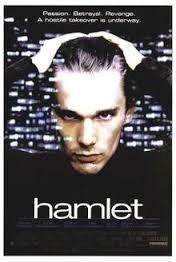 Hamlet, 2000, with Ethan Hawke. This version is set in a modern day urban area, Denmark being a large corporation and titles like “king” and “prince” used sort of tongue-in-cheek. I was not overly fond of it, but there was at least one stand-out (spoilers ahead): Julia Stiles’ post-Polonius-murder Ophelia was my absolute favorite, as was her suicide scene the most clear and moving of any I saw. In the end, you really wanted something much more like Baz Luhrman’s Shakespeare’s Romeo & Juliet.
Hamlet, 2000, with Ethan Hawke. This version is set in a modern day urban area, Denmark being a large corporation and titles like “king” and “prince” used sort of tongue-in-cheek. I was not overly fond of it, but there was at least one stand-out (spoilers ahead): Julia Stiles’ post-Polonius-murder Ophelia was my absolute favorite, as was her suicide scene the most clear and moving of any I saw. In the end, you really wanted something much more like Baz Luhrman’s Shakespeare’s Romeo & Juliet.
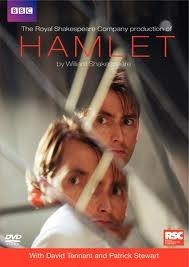 Hamlet, 2009, with The Royal Shakespeare Company. For straight-up Shakespeare, this was my favorite. They kept (mostly) the whole thing, for one, which is great. The production was full of great acting and ingenious interpretation, the settings sleek and dramatic, creating the perfect space to highlight the acting and the play itself. Set in a more modern royal family, simple costuming does not detract from the performances, either, but lend an aura of familiarity and understanding to the piece. Mariah Gale is my favorite Ophelia, Penny Downie my favorite Queen, Oliver Ford Davies is my favorite Polonius. And it doesn’t hurt that they didn’t have to get all Oedipal with Hamlet and mommy, at least not grossly so. David Tennant is an awesome Hamlet, mesmerizing even during his long monologues, and fed into the Hamlet I was seeing on the page: young, arrogant, un-moored, childish, etc.
Hamlet, 2009, with The Royal Shakespeare Company. For straight-up Shakespeare, this was my favorite. They kept (mostly) the whole thing, for one, which is great. The production was full of great acting and ingenious interpretation, the settings sleek and dramatic, creating the perfect space to highlight the acting and the play itself. Set in a more modern royal family, simple costuming does not detract from the performances, either, but lend an aura of familiarity and understanding to the piece. Mariah Gale is my favorite Ophelia, Penny Downie my favorite Queen, Oliver Ford Davies is my favorite Polonius. And it doesn’t hurt that they didn’t have to get all Oedipal with Hamlet and mommy, at least not grossly so. David Tennant is an awesome Hamlet, mesmerizing even during his long monologues, and fed into the Hamlet I was seeing on the page: young, arrogant, un-moored, childish, etc.
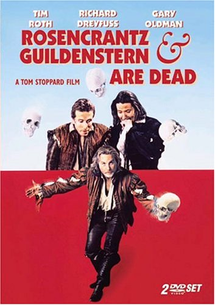 Rosencrantz & Guildenstern Are Dead, 1990, Tom Stoppard. Surprisingly (or not, depending on how well you know theater), this is my favorite adaptation of Hamlet. I might just rush out to the store and buy it right away, it is so good. It is witty and intelligent and funny and clever and all those other things that Stoppard is known for. But it is not exactly “Hamlet.” The movie (originally a play, see below) is “Hamlet” from the point of view of two of the more minor characters; Hamlet’s college buddies, Rosencrantz and Guildenstern. This version is wonderfully acted (Richard Dreyfuss as the Player is perfect, not to mention Gary Oldman and Tim Roth) and marvelously directed and executed. It is the perfect finality for the Stoppard play (again, see below), which is interesting because it was done by the play’s author. From the slapstick, British-style humor to the flickers of player-induced flash-forwards, I loved walking through a complete, working “Hamlet” castle with R & G, exploring the themes of death and tragedy with a side of laughter.
Rosencrantz & Guildenstern Are Dead, 1990, Tom Stoppard. Surprisingly (or not, depending on how well you know theater), this is my favorite adaptation of Hamlet. I might just rush out to the store and buy it right away, it is so good. It is witty and intelligent and funny and clever and all those other things that Stoppard is known for. But it is not exactly “Hamlet.” The movie (originally a play, see below) is “Hamlet” from the point of view of two of the more minor characters; Hamlet’s college buddies, Rosencrantz and Guildenstern. This version is wonderfully acted (Richard Dreyfuss as the Player is perfect, not to mention Gary Oldman and Tim Roth) and marvelously directed and executed. It is the perfect finality for the Stoppard play (again, see below), which is interesting because it was done by the play’s author. From the slapstick, British-style humor to the flickers of player-induced flash-forwards, I loved walking through a complete, working “Hamlet” castle with R & G, exploring the themes of death and tragedy with a side of laughter.
“…my cousin Hamlet, and my son– / A little more than kin, and less than kind” (p1074).
“Thou know’st ’tis common–all that live must die…. Why seems it so particular with thee?” (p1074).
“I know not seems” (p1074).
“You must know, your father lost a father; That father lost, lost his” (p1074).
“Frailty, they name is woman!” (p1074).
“…best safety lies in fear: Youth to itself rebels” (p1076).
“Give thy thoughts no tongue…. Give every man thine ear, but few thy voice: Take each man’s censure, but reserve they judgement” (p1076).
“Neither a borrower nor a lender be: For loan oft loses both itself and friend” (p1076).
“…to thine ownself be true” (p1076).
“…these blazes, daughter, give more light than heat (p1077).
“Something is rotten in the state of Denmark” (p1078).
“And thy commandment all alone shall live Within the book and volume of my brain, Unmix’d with baser matter” (p1079).
“There are more things in heaven and earth than are dreamt of in your philosophy” (p1080).
“The time is out of joint” (pp1080).
“…brevity is the soul of wit” (p1082).
“How pregnant sometimes his replies are! a happiness that often madness hits on, which reason and sanity could not…” (p1084).
“Denmark’s a prison. / Then the world is one” (p1084).
“…they say an old man is twice a child” (p1085).
“…use every man after his desert, and who should scape whipping? Use them after your own honour and dignity: the less they deserve the more merit is in your bounty. Take them in” (p1087).
“…the devil hath power To assume a pleasing shape” (p1087).
“…the play’s the thing Wherein I’ll catch the conscience of the king” (p1087).
“To be, or not to be,–that is the question” (p1088).
“…ay, there’s the rub; For in that sleep of death what dreams may come, When we have shuffled off this mortal coil, Must give us pause…” (p1088).
“The undiscover’d country, from whose bourn No traveller returns…” (p1088).
“Thus conscience does make cowards of us all” (p1088).
“Rich gifts wax poor when givers prove unkind” (p1089).
“…the purpose of playing, whose end, both at the first and now, was and is, to hold, as ’twere, the mirror up to nature…” (p1090).
“A second time I kill my husband dead When second husband kisses me in bed” (p1091).
“Our wills and fates do so contrary run” (p1092).
“Never alone did the king sigh, but with a general groan” (p1094).
“And how his audit stands who knows save heaven? (p1094).
“Assume a virtue, if you have it not …. For use almost can change the stamp of nature…” (p1096).
“At supper. / At supper! Where? / Not where he eats, but where he is eaten…” (p1098).
“What is a man, If his chief good and market of his time Be but to sleep and feed?” (p1099).
“…his mother Lives almost by his looks” (p1102).
“There lives within the very flame of love A kind of wick or snuff that will abate it” (p1103).
“The cat will mew, and dog will have his day” (p1107).
“I have shot mine arrow o’er the house And hurt my brother” (p1110).
“…death, Is strict in his arrest” (p1111).
Bo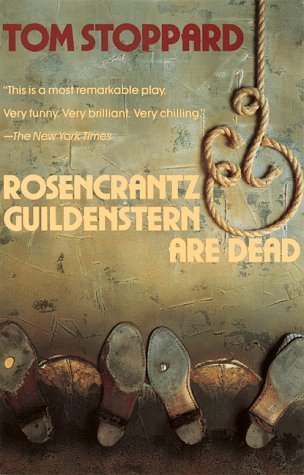 nus Book Review: Rosencrantz & Guildenstern Are Dead, 1966, by Tom Stoppard. Defined as an “absurdist, existentialist tragicomedy,” Once I had seen the movie, I couldn’t resist reading the play. Something in me had been remembering the play all the while I read “Hamlet,” which I think must have begun with a high school reading assignment. I was not disappointed. I love this play. I love it so much, I am going to add yet another something to my already crammed TBR, and take a detour-de-Stoppard. I will be reviewing a few more of his things, soon. (They arrive on Thursday.)
nus Book Review: Rosencrantz & Guildenstern Are Dead, 1966, by Tom Stoppard. Defined as an “absurdist, existentialist tragicomedy,” Once I had seen the movie, I couldn’t resist reading the play. Something in me had been remembering the play all the while I read “Hamlet,” which I think must have begun with a high school reading assignment. I was not disappointed. I love this play. I love it so much, I am going to add yet another something to my already crammed TBR, and take a detour-de-Stoppard. I will be reviewing a few more of his things, soon. (They arrive on Thursday.)
So we get it, I like the play. It is clearly brilliant. Although, I have to repeat that I think the 1990 film of it is its perfect actualization; actually better. But I don’t think I am stepping on too many toes there, because it is, after all, a Tom Stoppard production. If you like plays, run out and buy this play (but only after you have a working knowledge of “Hamlet;” without it, you can not appreciate it). Then wonder if you should read more Stoppard. That’s what I did, and for it I have been richly rewarded.
“At least we are presented with alternatives …. But not choice” (p39).
“What a fine persecution–to be kept intrigued without ever quite being enlightened” (p41).
“Half of what he said meant something else, and the other half didn’t mean anything at all” (p57).
“Fire! …. It’s all right–I’m demonstrating the misuse of free speech. To prove that it exists” (p60).
“I mean one thinks of it like being alive in a box, one keeps forgetting to take into account the fact that one is dead… which should make all the difference… shouldn’t it?” (p70).
“There’s a design at work in all art–surely you know that? Events must play themselves out to aesthetic, moral and logical conclusion. / And what’s that, in this case? / It never varies–we aim at the point where everyone who is marked for death dies” (p79).
“The bad end unhappily, the good unluckily. That is what tragedy means” (p80).
“…it’s not gasps and blood and falling about–that isn’t what makes it death. It’s just a man failing to reappear, that’s all–now you see him, now you don’t, that’s the only thing that’s real: here one minute and gone the next and never coming back…” (p84)
“…there are wheels within wheels, etcetera–it would be presumptuous of us to interfere with the designs of fate or even of kings” (p110).
“Very often, it does not mean anything at all. Which may or may not be a kind of madness” (p116).
“But no one gets up after death–there is no applause–there is only silence and some second-hand clothes, and that’s–death–” (p123).


September 1, 2013
Month Recap: Those Summer Nights
This has been a slow month for lots of things pertaining to this blog, and yet one of the most eventful months of my life. My husband has started his new career as a nurse, my youngest child has scooted off to kindergarten, and I have started working five days a week, 9am-230pm. As a writer. Pretty cool, huh?
August is also my birthday month. So happy birthday to me.
And Owl and Zebra Press got its first real snail mail at its PO Box, which also happened to be the certificate from the Library of Congress, letting us know that Benevolent (including the art and editing) is officially copyrighted and on file at the Library (with a big L).
And I joined a local writing group, finally.
And when I returned from visiting family in New York, I discovered that Benevolent is Indie Reader Approved! Check it out if you want to read the review. It is very nice, I think.
So, besides the fact that I am hard at work writing The Family Elephant’s Jewels (section three), beginning a novella spin-off of Benevolent, and spear-heading a project hopeful for Owl and Zebra Press, I have had moments of scrap time (hah!) to watch something besides “Hamlet” versions (see Book Review of Hamlet to hear all about those). And here they are:
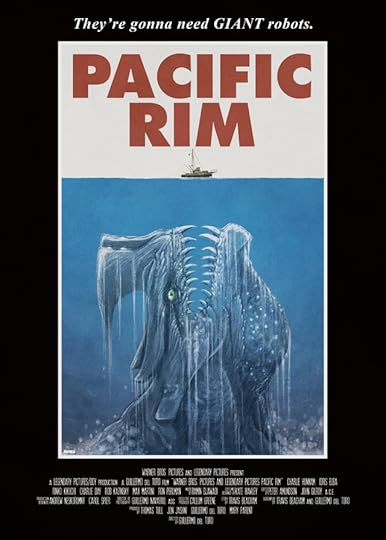 Pacific Rim (2013), which I got to see at the theater on our annual Syracuse date, after a great meal at Kitty Hoynes in Armory Circle. I really like Cloverfield, so we though I might like this new, modern kaiju movie. I did, but with limitations. It wasn’t something I would watch over again or recommend too strongly, but it was good, clean fun nonetheless. Entertaining. Maybe a little scary. Predictable. And interesting, too. Spurs conversation, not about the movie itself so much, but about mind melds and Japanese film.
Pacific Rim (2013), which I got to see at the theater on our annual Syracuse date, after a great meal at Kitty Hoynes in Armory Circle. I really like Cloverfield, so we though I might like this new, modern kaiju movie. I did, but with limitations. It wasn’t something I would watch over again or recommend too strongly, but it was good, clean fun nonetheless. Entertaining. Maybe a little scary. Predictable. And interesting, too. Spurs conversation, not about the movie itself so much, but about mind melds and Japanese film.
N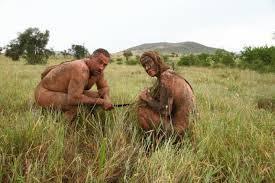 aked and Afraid (series, 2013-). When I first heard about this show, I made fun of it. I mean, what is the state of our culture when we actually have a reality show where they drop two strangers, naked, into a harsh environment, and film them for 21 days, hoping they survive and do something interesting? Well, I’ve only seen a few episodes, but strangely enough, I sort of enjoyed it. I don’t know how long I could watch the show, but a few episodes are enough to get you spinning psychological and anthropological hypotheses like a professional. So, more interesting conversation.
aked and Afraid (series, 2013-). When I first heard about this show, I made fun of it. I mean, what is the state of our culture when we actually have a reality show where they drop two strangers, naked, into a harsh environment, and film them for 21 days, hoping they survive and do something interesting? Well, I’ve only seen a few episodes, but strangely enough, I sort of enjoyed it. I don’t know how long I could watch the show, but a few episodes are enough to get you spinning psychological and anthropological hypotheses like a professional. So, more interesting conversation.
She rlock (British series, 2010-). I am not the only one who loves this series. It’s not all airtight or anything, but it is addictive. Originally, I understood that the smart and fun series based on Sir Arthur Conan Doyle’s books was complete at two seasons of three 1-and-1/2 hours episodes each. However, they left season two with a cliffhanger, and have announced that another three-episode season is on the way… some day. Until then, if you haven’t already seen them, you’ll want to get them on your Netflix or Hulu or Amazon Prime or whatever. Yes, you will.
rlock (British series, 2010-). I am not the only one who loves this series. It’s not all airtight or anything, but it is addictive. Originally, I understood that the smart and fun series based on Sir Arthur Conan Doyle’s books was complete at two seasons of three 1-and-1/2 hours episodes each. However, they left season two with a cliffhanger, and have announced that another three-episode season is on the way… some day. Until then, if you haven’t already seen them, you’ll want to get them on your Netflix or Hulu or Amazon Prime or whatever. Yes, you will.
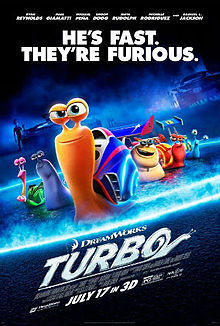 Turbo (2013). Rounding out the month very nicely, I spend a mommy-son date at the end with Eamon, a bag of popcorn, and tickets to Turbo. Admittedly, it starts slow, but it eventually delivers, making it one of the better kid movies of the year. But be forewarned: themes of prospering through bucking authority are prevalent, as well as themes of being able to accomplish anything–even the physically impossible–if one just applies oneself… or wishes on an airplane. I personally believe these are two of the most tired and dangerous themes in children’s entertainment, but it is everywhere.
Turbo (2013). Rounding out the month very nicely, I spend a mommy-son date at the end with Eamon, a bag of popcorn, and tickets to Turbo. Admittedly, it starts slow, but it eventually delivers, making it one of the better kid movies of the year. But be forewarned: themes of prospering through bucking authority are prevalent, as well as themes of being able to accomplish anything–even the physically impossible–if one just applies oneself… or wishes on an airplane. I personally believe these are two of the most tired and dangerous themes in children’s entertainment, but it is everywhere.



